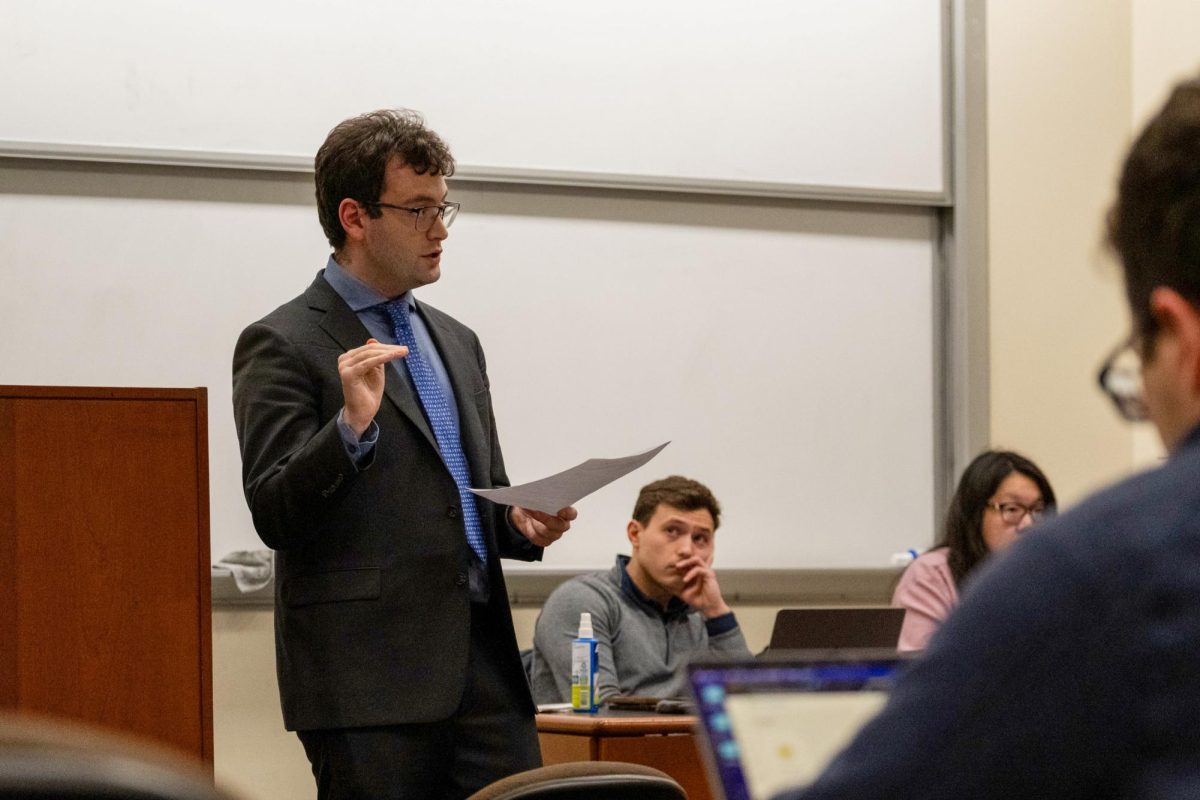The University is jolting fundraising for its all-but-final strategic plan and could set off some ideas within the next two years.
The 10-year plan, which could cost up to $400 million, hinges on fundraising success. Officials have begun pitching the its tenets – from doubling the number of enrolled international students to more immersive study abroad programs – at small dinners with top donors, Vice President of Development and Alumni Relations Mike Morsberger said Friday.
“While I’m hoping the small dinners draw some very big gifts, we’re trying to spread the word and build the base,” Morsberger said. “We’re responding to everyone’s wants and needs, but this is really something we can sell.”
Though administrators say the plan is mostly final after 16 months of crafting, the timeline for schools to execute it remains fuzzy.
After the plan’s final hurdle – a Board of Trustees vote over the next few weeks – Provost Steven Lerman will convene task forces to figure out how to implement ideas such as building new cross-field research centers. He said each group would include administrators, faculty and students, though he wasn’t sure how many groups there would be or how many members each would include.
He said he would also not set a deadline for when each individual school would lay out implementation plans.
Parts of the plan, like adding up to 100 faculty positions, could take up to a decade, but Lerman said in December that by outlining the plan, GW has a platform to pitch to donors.
“This is something that’s been accelerating now for a couple of years, and it will become more and more intense over time as we get the plan finalized and more and more of us talk about it with people who have immense affinity with GW,” Lerman said in December.
Lerman said first on the docket is laying out the new admissions model that would admit high school students directly into the University instead of its specific schools. That switch could be set within the next two years, and would require immediate planning on GW’s part to shift its messaging to high school students, he added.
Other pieces closer to fruition include new interdisciplinary research centers that could be rolled out by next academic year, Lerman said.
“We won’t try to do everything at once. You have to make choices in the plan [about] what comes first,” Lerman said.
And as GW’s fundraising machine builds momentum, Lerman said his office has also stockpiled about $6 million from the Innovation Task Force – a group University President Steven Knapp charged in 2009 with finding $60 million in recurring savings and new revenue by identifying ways to save money. About $5.2 million of those funds will go toward the strategic plan every year.
Chair of the Faculty Senate executive committee Michael Castleberry said faculty and program directors will soon begin to react to financial incentives to shape their research and teaching agendas.
“Faculty will go anywhere where there’s money,” Castleberry, a special education professor said. “Even if I wanted research on flowers in Montana, if they’re going to offer me money to look at Chinese special education students, I’ll look at Chinese special education students.”
As professors vie for research dollars coming out of the plan, the fundraising rush will require more time from deans and other top administrators, Morsberger said. Knapp molded deans into fundraising chiefs three years ago, mandating that they spend at least 40 percent of their time raising money.
“There will be an enhanced effort to ramp up that time,” Morsberger said. “Dr. Knapp does a lot of this. A lot. It’s one of his top priorities. The provost does a lot, as do the deans. I expect it to all pick up even more.”
The University will officially launch a sweeping, comprehensive fundraising campaign within the next two years. The strategic plan will account for about one-third to half of that campaign’s goal. Now, Morsberger’s office is in the midst of the quiet phase of the fundraising campaign by talking to top donors in small groups.
The University is looking to advance from raising about $120 million per year to $200 million per year by the end of the decade. GW has seen increases in giving for the last five years, but has historically faced low alumni giving rates and only began building up its development office when it tripled its staff between 2005 and 2009.
Strategic plan fundraising will also come as GW is trying to raise millions of dollars for scholarships and hefty construction projects like the $275 million Science and Engineering Hall and $75 million School of Public Health and Health Services building. GW will also use $1.35 million saved annually from lowering the interest rate on two series of bonds over the last few years.
The University’s last strategic plan in 2002 also convened task forces and targeted money toward specific areas like transportation safety and Asian studies.
Sarah Ferris contributed to this report.






